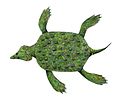| Maresaurus Temporal range: Bajocian ~ | |
|---|---|
| Scientific classification | |
| Domain: | Eukaryota |
| Kingdom: | Animalia |
| Phylum: | Chordata |
| Class: | Reptilia |
| Superorder: | † Sauropterygia |
| Order: | † Plesiosauria |
| Family: | † Rhomaleosauridae |
| Genus: | † Maresaurus Gasparini, 1997 |
| Species: | †M. coccai |
| Binomial name | |
| †Maresaurus coccai Gasparini, 1997 | |
Maresaurus is an extinct genus of plesiosaur from the Middle Jurassic (Bajocian) Los Molles Formation of Argentina. The type species, Maresaurus coccai, was named by Gasparini in 1997. Recent phylogenetic analysis found Maresaurus to be a rhomaleosaurid. [1] [2]






